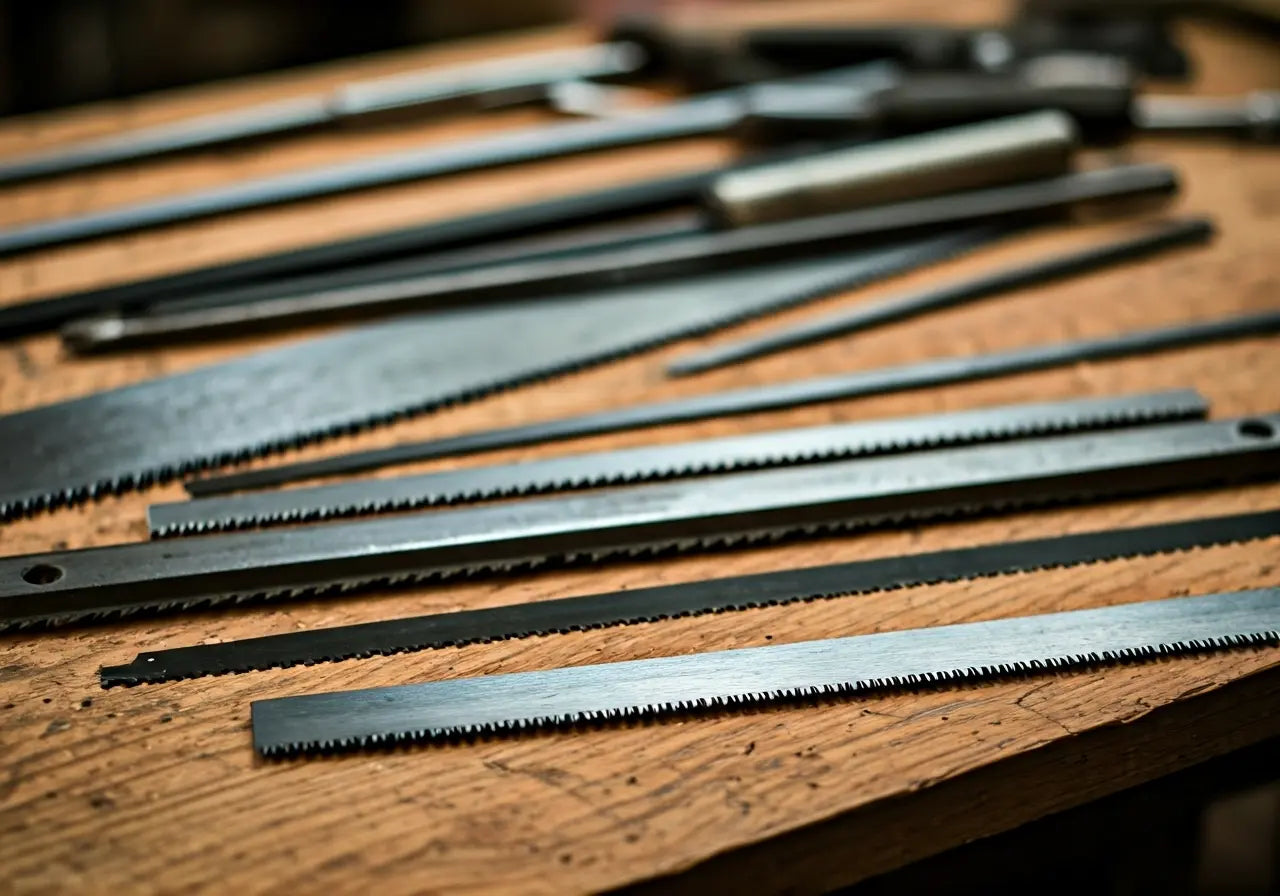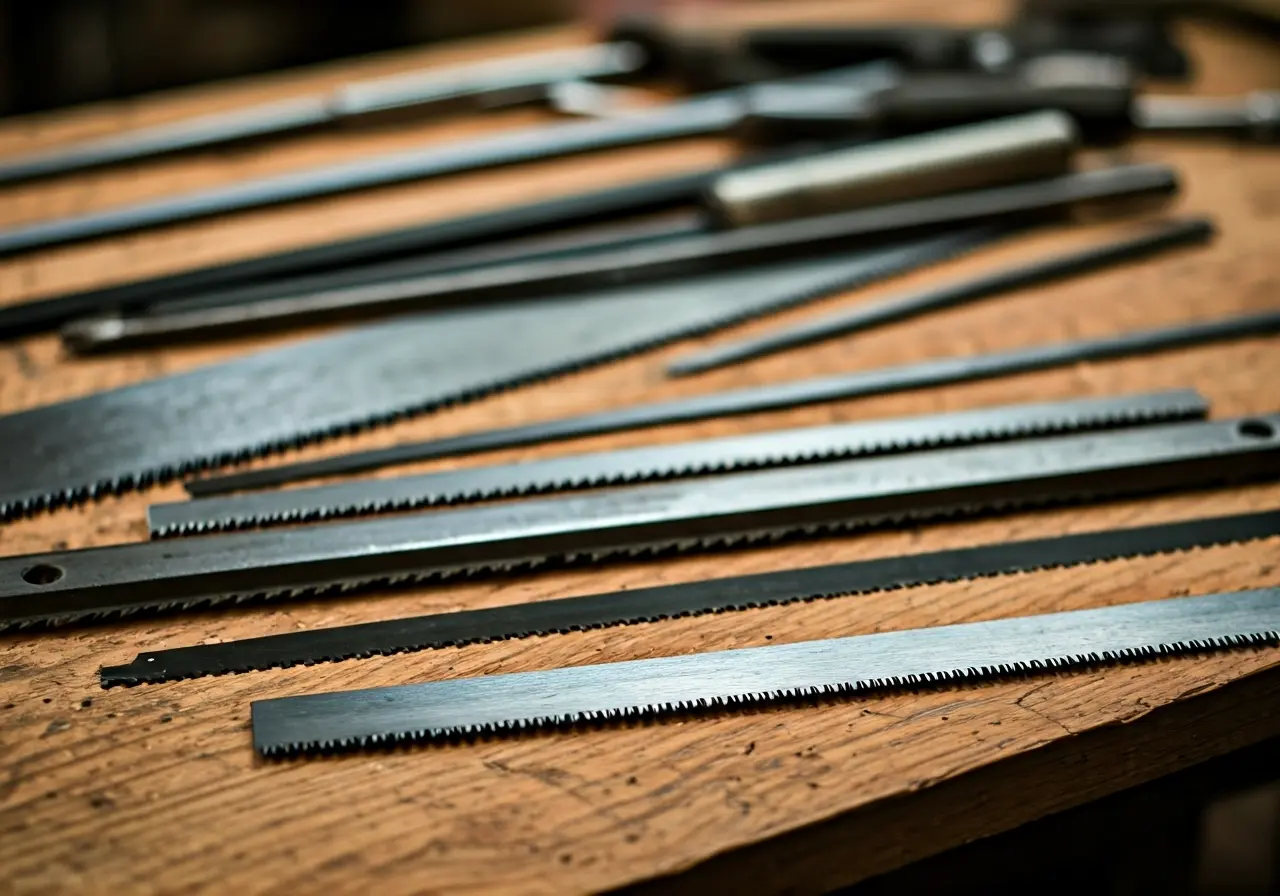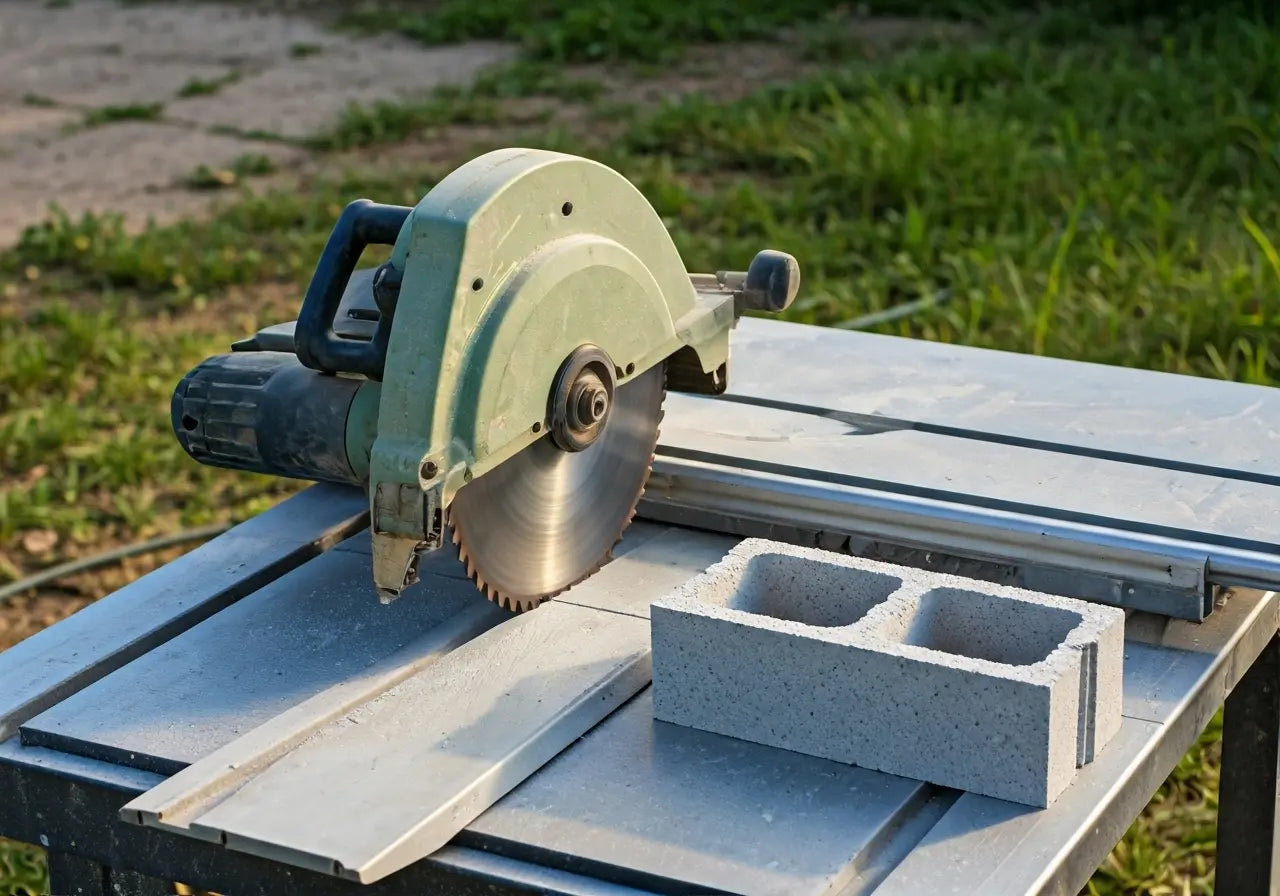Choosing the right saw blade can make all the difference in the success and efficiency of your woodworking or DIY project. With so many options on the market, it can be daunting to figure out which blade is best suited for your needs. In this blog, we’ll break down the different types of saw blades, their uses, and how to pick the right one for your project.
Types of Saw Blades: An Overview
Before diving into specifics, it’s essential to know the broad categories of saw blades available in the market. From crosscut blades to ripping blades, each type serves a unique purpose in cutting wood and other materials. Crosscut blades are designed with teeth set at an angle, allowing for smoother cuts across the grain. This makes them ideal for precision work and fine finishes. On the other hand, ripping blades are crafted to cut along the grain, providing quick, aggressive cuts that are particularly suited for tasks where speed is more important than smoothness.
Then, we have combination blades, which are a versatile choice for those who want a balance between crosscutting and ripping capabilities. These blades usually have an alternating tooth design, making them a great all-around option for various woodworking tasks. However, for those seeking more specialized cuts, there’s always the option of diamond-tipped blades, renowned for their ability to cut through hard materials like tile and concrete with ease. Each type of blade brings unique qualities to your toolbox, and understanding these can significantly influence the outcome of your project.
Material Matters: Choosing Blades for Different Materials
Different projects require working with a variety of materials such as wood, metal, or plastic. Here, we’ll discuss which saw blades are best suited for different materials to achieve seamless cuts without damaging your workpiece. For instance, when working with hardwood, a carbide-tipped blade can offer the durability and precision needed for such dense materials. These blades withstand high resistance, maintaining sharpness for a longer time compared to standard steel blades.
For metal cutting, high-speed steel or bi-metal blades are preferred due to their resilience against the heat generated during cutting. These blades typically have a higher tooth count, ensuring smoother edges on metal surfaces. Meanwhile, when cutting plastics, using a blade with an upward angle on its teeth can help avoid chipping or cracking, ensuring a clean finish. Understanding the characteristics of the material you are working with and matching it with an appropriate blade type is crucial not just for effectiveness, but also for safety.
Understanding Tooth Count and Configuration
The tooth count and the configuration of a saw blade can significantly impact the smoothness of the cut. Discover how to select the appropriate tooth count for your project to attain the desired finish. A higher tooth count generally leads to smoother cuts, making such blades ideal for fine woodworking. For instance, a 80-tooth blade might be perfect for creating smooth edges on delicate wood trims, whereas a lower tooth count, such as 24, is typically used for faster, rough cuts on framing lumber.
Additionally, the shape of the teeth matters; different configurations like flat-top, alternate-top bevel, or triple-chip grind, offer unique advantages depending on the material being cut. For example, alternate-top bevel blades are excellent for crosscutting hardwoods and softwoods, giving clean, precise cuts. On the other hand, the triple-chip grind blade is the choice for harder materials such as abrasive laminate flooring. By understanding how tooth count and configuration influences cutting performance, you can make more targeted and effective choices for your cutting tasks.
Specialty Blades: When to Use Them
Sometimes, regular blades just won’t cut it—literally. This section covers specialty blades, such as dado blades and multi-cutting blades, and explains when it’s advantageous to invest in them. Dado blades, for instance, are used to cut grooves or dados in woodworking. They are not typical blades but a set of blades stacked together to remove a larger amount of material, which is fundamental in cabinet-making or crafting tabletops where hidden joints are needed.
Multi-cutting blades, meanwhile, are built for versatility, designed to tackle a range of materials without the need for constant blade changes. These might be your go-to choice in a workshop dealing with varied materials on a daily basis. However, understanding the limitations and requirements of each specialty blade is important, as improper use can lead to inefficient cuts or even damage to your project materials. These blades are investment pieces for serious enthusiasts and professionals alike.
Maintenance Tips for Optimal Performance
Proper maintenance is key to extending the life of your saw blades. Learn some handy tips and best practices to keep your blades sharp and ready for action. Ensuring your blades are clean and free from resin build-up guarantees smoother cuts and longer blade life. Regular cleaning with a resin dissolve solution can help maintain optimal performance. Remember, a dull blade not only affects cutting quality but can also be a significant safety risk.
Regular checking and alignment of your saw can prevent uneven wear on your blades. It’s essential to store your blades properly, preferably hanging them or placing them in dedicated blade storage slots to prevent any warping. Moreover, periodic sharpening will keep your blade’s edge in tip-top shape, improving both accuracy and efficiency. Implementing these practices ensures you get the maximum life and performance from your investment, letting you focus on the quality and creativity of your projects.
Making the Right Cut: Ensuring Project Success
Understanding the different types of saw blades and their specific uses can greatly enhance your project’s success. By considering the materials, tooth count, and blade types, you can make informed decisions that will not only improve your work but also ensure safety and efficiency. Happy sawing!






Hinterlasse einen Kommentar
Diese Website ist durch hCaptcha geschützt und es gelten die allgemeinen Geschäftsbedingungen und Datenschutzbestimmungen von hCaptcha.